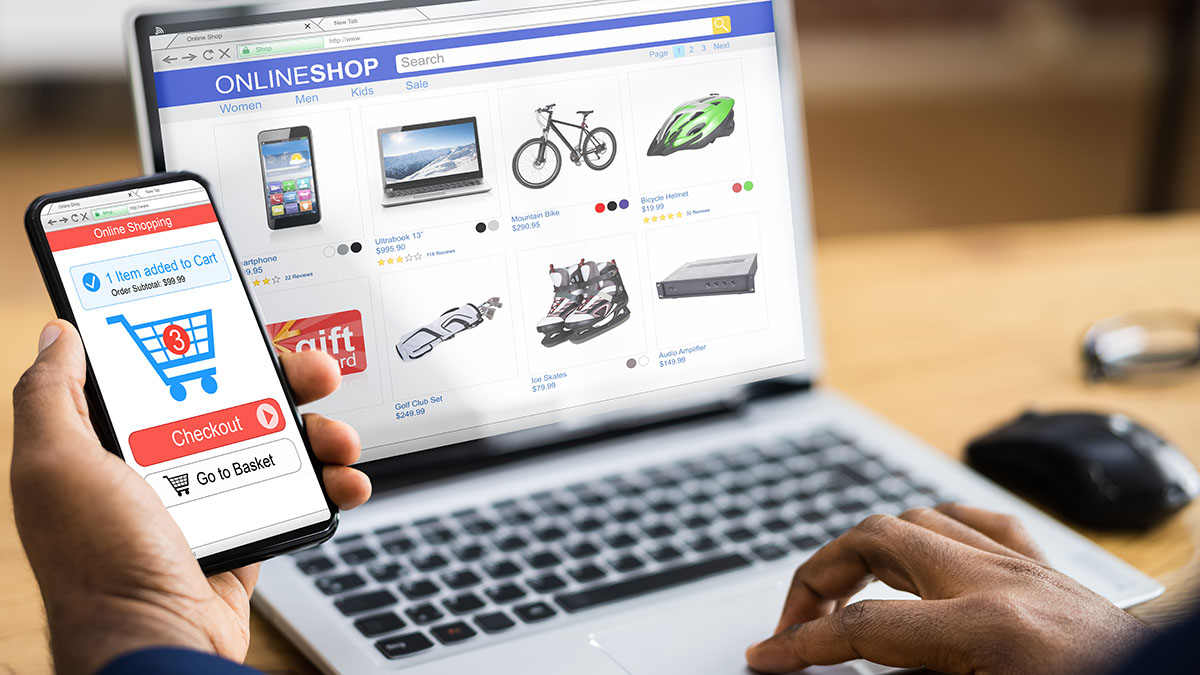How has COVID-19 triggered digital and e-commerce?

Khevna.P.Shah, INN/Bangalore
@Shahkhevna1, @Infodeaofficial
Since the COVID-19 and the resulting restrictions have led to slowing economic activity, a surge in e-commerce, and a growth in digital transformation.
As lockdowns and the restrictions became the new normal, businesses and consumers opted for the online platform, providing and purchasing more goods and services online, raising e-commerce’s share of global retail trade from 14% in 2019 to about 17% in 2020.
UNCTAD Acting Secretary-General Isabelle Durant said: “Businesses and consumers that we’re ready to ‘go digital’ have helped mitigate the economic downturn caused by the pandemic.”

The Indian e-commerce market has been one of the biggest heritors of the pandemic, as containment measures introduced millions to the convenience of online shopping, and prompted seasoned online shoppers to buy more.
Social distancing compulsions through the year, massive smartphone base, and reliable broadband galvanized e-commerce uptake beyond metros, deep into smaller cities and towns, bringing a component of trust in online commerce.
The pandemic necessitated the utilization of the latest technology tools and non-contact formats to cater to unprecedented demand. Analysts said these shifts in consumer shopping traits might be permanent post-pandemic.
The pandemic caused a structural shift in shopping behavior with more and more customers and businesses counting on e-commerce. Companies like Amazon and Flipkart also as industry watchers noted that the necessity for social distancing and prioritizing safety during the pandemic led to many people turning to e-commerce platforms this past year, not only in the metropolitan cities but also in tier III regions and beyond.
From changes in category preferences to the emergence of the latest essentials, and from the adoption of native languages to a surge in new-age sorts of payments — the past year bore witness to an array of unique consumer trends.
Companies like Amazon also saw similar trends as thousands of neighborhood Kirana stores and offline retailers also came onboard to leverage digital technology to reach customers’ doorstep.
An employer at Grofers said that amongst all new users on its platform in the last year, 64 percent were first-time online grocery shoppers, while 20 percent were totally new to e-commerce.
Other than Amazon, Flipkart witnessed new user growth on the brink of 50 percent soon after the lockdown, with tier III regions and beyond registering the very best growth of 65 percent during the restriction lift phase last year.
To ensure convenience for first-time internet buyers, Flipkart introduced new capabilities to handhold them through the acquisition journey with the addition of a voice assistant and vernacular interfaces in multiple languages.
Notably, the demand for online goods and products mirrored the various facets of life under the lockdown and pandemic.
Demand spiked in categories like groceries, headquarters essentials like laptops and headphones, furniture, consumer electronics products, health and fitness products, household products, personal grooming products, apparel, toys, and books, according to e-tailers.
As customer consumption patterns and habits evolved, over the last year, sellers have seen high demand in categories like groceries, work from home, and online schooling enablers like laptops, smart devices, and headphones. We also saw significant demand for private grooming products, wellness products, masks and sanitizers, and fitness products…,” an Amazon India spokesperson said.
The new normal of working and learning from home also fuelled demand for consumer electronic products.
With the increase in the Work from Home environment, Flipkart said laptops and desktops saw a time times the increase in demand in 2020, compared to pre-COVID levels.
The opportunities, however, came hassled with new challenges. The lockdown brought the transportation of products and therefore the movement of personnel to a grinding halt. There was an initial buffer and e-commerce companies struggled to complete deliveries even as orders piled up.
During the initial period of the lockdown, e-commerce companies were allowed to sell only essential items like grocery, healthcare, and pharmaceutical products. In the following phases, the restrictions were gradually lifted which increased the sales twice when compared to the earlier phase.
The pandemic also marked a turning point for little and medium businesses, which swiftly adjusted to the new e-commerce reality.
“Post the pandemic, faster delivery, zero shipping charges, ratings, and review information, and broader selection are going to be the key drivers of e-commerce growth,” said Sachin Taparia, founder and chairman of LocalCircles.




